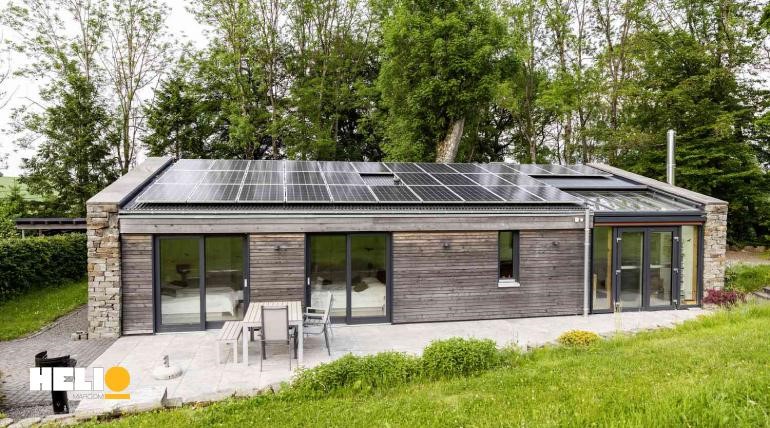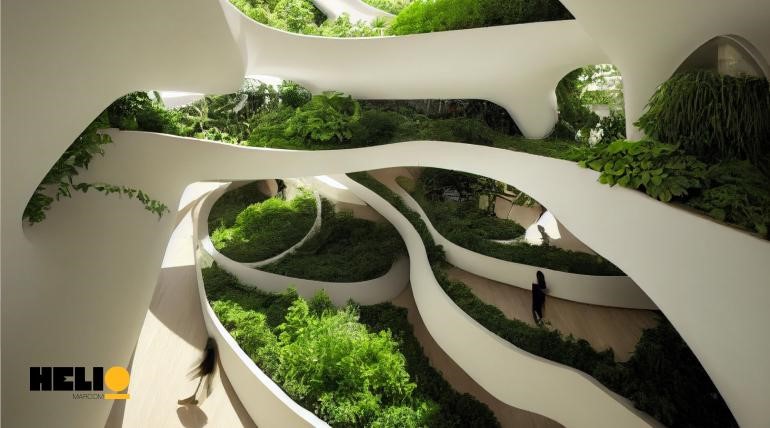In the realm of architecture, the concept of sustainability has transitioned from a niche interest to a fundamental aspect of modern design. Sustainable architecture, with its focus on minimizing environmental impact while maximizing resource efficiency, represents not just an ethical choice but a necessary evolution in response to our changing world. This comprehensive guide explores the facets of sustainable architecture, highlighting its significance, principles, and the innovative applications that are shaping residential and commercial spaces globally.
To stay at the forefront of sustainable architecture, engaging with pioneering firms like Helio Archi is essential. With a strategic focus on innovation and sustainability, Helio Archi exemplifies how modern practices can meet the demands of both home and business environments, proving that eco-conscious design does not compromise on aesthetics or functionality.
What Is Sustainable Architecture?
Sustainable architecture goes beyond mere energy conservation, integrating a holistic approach that considers the lifecycle of resources, the well-being of occupants, and the preservation of the natural environment. Its importance in today’s construction landscape cannot be overstated, as it addresses critical issues such as climate change, resource depletion, and habitat destruction. By adopting sustainable practices, architects and builders can create structures that are not only environmentally responsible but also viable for decades to come.
Transforming Residential Spaces with Modern Architecture Residential Ideas
Residential architecture has seen a substantial shift towards sustainability, with designs that incorporate key principles such as energy efficiency, water conservation, and the use of eco-friendly materials. Case studies from around the world, including the innovative work of Ingenhoven Architects and Mario Cucinella Architects’ TECLA, showcase homes that are not just dwellings but ecosystems in their own right. These projects emphasize the seamless integration of design elements that reduce carbon footprints, enhance energy independence, and foster a closer connection with the natural environment.
Tips for Sustainable Home Construction and Renovation
For those looking to build or renovate their homes with sustainability in mind, consider these guidelines:
- Prioritize passive design techniques to take advantage of natural lighting and ventilation.
- Select materials that are recycled, renewable, and locally sourced to minimize environmental impact.
- Incorporate renewable energy systems, such as solar panels and wind turbines, to reduce reliance on fossil fuels.
- Implement water-saving measures, including rainwater harvesting and greywater recycling systems.
Innovating in Commercial Architecture
Commercial buildings play a significant role in the global environmental footprint, making sustainable design crucial in this sector. Innovations in green building design, such as Kö Bogen II by Ingenhoven Architects and Powerhouse Brattørkaia by Snøhetta, demonstrate how commercial structures can achieve energy positivity and net-zero emissions. These buildings leverage cutting-edge materials, smart technologies, and biophilic design principles to create spaces that are not only efficient but also enhance the health and productivity of their occupants.
The Business Case for Sustainable Architecture
Investing in sustainable architecture yields significant benefits for businesses, including reduced operational costs, increased asset value, and improved employee satisfaction. Furthermore, green buildings serve as tangible commitments to sustainability, enhancing a company’s brand reputation and aligning with the values of eco-conscious consumers and stakeholders.
| Case Studies | Explanation |
| Bosco Verticale – Milan, Italy | Bosco Verticale, or “Vertical Forest,” comprises two residential towers covered in lush greenery, providing habitat for birds and insects, and contributing to air purification and biodiversity. |
| One Central Park – Sydney, Australia | One Central Park features a cantilevered garden with a variety of plants, including hanging gardens, which enhance the building’s aesthetics while promoting biodiversity and reducing urban heat island effect. |
| The Edge – Amsterdam, Netherlands | The Edge is one of the world’s most sustainable office buildings, featuring energy-efficient design, rooftop solar panels, rainwater harvesting systems, and smart technology for optimal energy usage. |
| The Crystal – London, United Kingdom | The Crystal is an environmentally sustainable building with a focus on energy efficiency and renewable energy sources, such as solar and ground source heat pumps, aiming for zero carbon emissions. |
| The Bullitt Center – Seattle, United States | The Bullitt Center is a commercial office building designed to be self-sufficient in energy and water usage, featuring rooftop solar panels, rainwater harvesting, composting toilets, and greywater recycling. |
| The Change Initiative Building – Dubai, UAE | The Change Initiative Building is a sustainable retail space showcasing eco-friendly products and practices, including energy-efficient lighting, water-saving fixtures, and recycled materials in construction. |
| Nanyang Technological University – Singapore | Nanyang Technological University’s sustainable campus features green roofs, solar panels, rainwater harvesting systems, and advanced building management systems to reduce energy consumption and carbon footprint. |
Looking Ahead: The Future of Sustainable Architecture
The future of sustainable architecture is bright, with emerging technologies and design philosophies promising even greater advancements. From modular and prefabricated construction to cradle-to-cradle design, the possibilities for innovation are endless. However, the success of these endeavors hinges on widespread adoption and support from individuals, communities, and governments alike.
How You Can Support Sustainable Architecture
Whether you are an architect, builder, homeowner, or business leader, there are many ways to support sustainable architecture and pave the way for a greener future. Some examples include:
- Advocate for green building practices and policies in your community.
- Consider sustainability as a key factor in your own home or business construction projects.
- Educate yourself and others about the benefits and principles of sustainable design.

Discover Modern House Architecture Ideas & Commercial Innovations with Helio Archi
Sustainable architecture represents a critical step towards a more resilient and equitable world. By embracing the principles outlined in this guide, we can all contribute to the creation of built environments that honor the earth, promote health and well-being, and ensure a prosperous future for generations to come. Whether you are a designer, architect, builder, or simply someone who cares about the planet, the time to act is now.
To truly revolutionize your next architectural project with sustainability at its core, partnering with Helio Archi is your strategic choice. Our team at Helio Archi is dedicated to innovating within the realms of sustainable architecture, ensuring that every project we undertake not only meets but exceeds the standards of eco-conscious design. Whether you’re planning a residential build or a commercial development, Helio Archi has the expertise and the passion to bring your vision to life.
Join us in shaping a sustainable future through architecture that respects our planet and its people. Contact Helio Archi today to discuss how we can collaborate on your upcoming project, making it a beacon of environmentally responsible design.
Your commitment to sustainable architecture starts with a choice. Make that choice Helio Archi, and together, we can create spaces that are not only aesthetically pleasing but also ethically sound and environmentally resilient.
Frequently Asked Questions (FAQs)
1. What is sustainable architecture?
Sustainable architecture is the practice of designing buildings and using processes that are environmentally responsible and resource-efficient throughout a building’s life-cycle.
2. How does sustainable architecture benefit the environment?
It reduces the negative environmental impact of buildings by enhancing efficiency and moderation in the use of materials, energy, and development space.
3. What are some examples of passive design techniques?
Passive design techniques include proper building orientation, natural ventilation, and daylighting to reduce energy consumption.
4. How do renewable energy systems contribute to sustainable architecture?
They reduce reliance on fossil fuels, decrease greenhouse gas emissions, and can significantly lower operational costs.
5. What are the advantages of green roofs and walls?
Green roofs and walls help in temperature regulation, improve air quality, and increase biodiversity in urban areas.
6. How can existing buildings be adapted for sustainability?
Through retrofitting with energy-efficient systems, improving insulation, and incorporating sustainable materials.
7. What is a zero net energy building?
A building with zero net energy consumption, meaning the total amount of energy used by the building annually is roughly equal to the amount of renewable energy created on-site.
8. What is biophilic design, and how does it enhance sustainability?
Biophilic design incorporates natural elements into architectural design, improving occupant connectivity to the natural environment, which can enhance mental and physical well-being and reduce energy costs.
9. How can communities be designed to promote sustainability?
Through mixed-use developments, promoting walkability, and providing access to public transportation and community resources.
10. What is LEED certification, and why is it important in sustainable architecture?
LEED (Leadership in Energy and Environmental Design) is a widely used green building rating system, providing a framework for healthy, highly efficient, and cost-saving green buildings.





